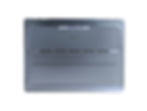Laptop Review: Alienware 16X Aurora
- Stephen Knight
- Jul 21
- 6 min read
Updated: Dec 13
With Dell consolidating and renaming their product lines in 2025, the Dell G series entry level/midrange gaming laptops have been replaced by the new Alienware 16 and 16X Aurora series. These sit below the well reviewed high end Area-51 series. The 16 Aurora line is more entry level based, with plastic chassis and 100% sRGB displays, whilst the 16X Aurora line is more midrange based with metallic chassis and 100% DCI-P3 displays.
This review is of the Alienware 16X Aurora AC16251 model with the following specs:
Intel Core Ultra 7 CPU 255HX (20 core)
NVIDIA RTX5060 graphics, 8GB GDDR7
32GB RAM (2x16GB) DDR5 5600MT/s
1TB M.2 PCIe NVM2 SSD
16" WQXGA display, 240Hz, 100% DCI-P3, G-SYNC
1-zone RGB backlit keyboard
Ports 2 USB 3.2 Gen 1, 1 USB Gen 2 Type-C with PD, 1 Thunderbolt 4 with DPO 2.1, 1 HDMI 2.1, 1 audio RCA 3.5mm, 1 RJ45 Ethernet (1Gbps), 1 power adapter port
Windows 11 Home
Dimensions H 19.20-23.40mm, D 265.43mm, W 356.98mm
Weight 2.6kg (plus 0.58kg 180W power adapter)

Alienware logo on the display lid.
Why the Alienware 16X Aurora?
The laptop used for this review was purchased with my own funds.
Why did I choose the Alienware 16X Aurora? Rather than gaming, I was actually looking for a laptop that met the following criteria for post processing using Lightroom Classic and Photoshop, plus basic video editing using DaVinci Resolve. My requirements were:
RTX5060 or better, to handle Lightroom Classic's AI denoise
32GB RAM
1TB SSD
16" WQXGA display 100% DCI-P3
Decent CPU - 7 series or better
Backlit keyboard
High reliability and lifespan (5 years+)
Metallic chassis
SD card reader (desirable)
Less than AU$3000
With (an easily found) discount code bringing the price down to AU$2900, the 16X Aurora was pretty much the only laptop available in Australia that met these requirements, other than the lack of SD card reader, which is sadly now a rarity. The Lenovo Legion 5 Pro series was another option, but the required spec required a few weeks to build, and was slightly higher priced. HP Omen 16 lacked 100% DCI-P3 displays. MSI Crosshair did meet most of the requirements, but I had concerns over quality. Gigabyte AERO 16X was enticing due to the low weight, but most vendors in Australia only sell the 16GB version, and displays are only 100% sRGB. All other options were above AU$3000, or not yet available. I also excluded all custom manufacturers after my last re-badged Tongfang/Intel Whitebook laptop's keyboard failed at the 3.5 year mark and it always had weird system configuration behaviour (such as the fan running on high when not in use).
Review
Chassis and Design
The Alienware 16X Aurora has a metallic chassis, and plastic keyboard deck. This is similar in construction to the Dell Precision/Pro Max workstation laptops, and is very solid with very minimal flex. Weight is at the higher end of mid-range gaming laptops, but still portable. The 180W power adapter for the RTX5060 is much lighter than the more powerful power adapter for the RTX5070 version.
The laptop has a refined look, with (aside from the keyboard) no RGB lighting. Some gamers may be upset by the laptop not looking like a 1990s nightclub lighting rig, but for those who want a professional looking yet high performance laptop, the lack of RGB lighting is a good design choice.
The cooling system is interesting. The intake vents are above the keyboard, and the primary exhaust vents are to the sides. The fan exhaust sits in an extension below the bottom of the laptop which tilts the laptop forwards slightly. I see this is a being a positive for both cooling and ergonomics.


Display
The display is again very good for the price range. The 16" WQXGA IPS display runs at up to 240Hz, with 100% DCI-P3 colour space, and G-SYNC enabled. As I purchased this laptop for photo and video editing, the DCI-P3 colour space was highly desirable. Contrast is very good, and sharpness is good. Brightness is an impressive 500 nits, and so far I'm running it at 50%. There is a tiny amount of backlight bleed, but nothing to worry about.
Many other products in this price range are either FHD+, or WQXGA with only 100% sRGB colour space. It isn't OLED, but few competitors offer OLED displays in this price range (Lenovo's 16" Legion 5 Pro range being the closest).
I have yet to calibrate the display, and out of the box it seems to be slightly warmer than my old laptop's display. This might be due to Dell's ComfortView.

Keyboard and Touch Pad
Some early YouTube reviews have complained about the keyboard, but don't seem to have considered that this isn't a US$3000 laptop. The keyboard is better to type on than a Dell Inspiron and Latitude laptops which are standard work issue laptops. The keyboard has single zone RGB lighting, good for seeing keys in the dark, but some gamers may want more. The touch pad is pretty good (and not oversensitive like some touch pads), though to be honest, I prefer to use mice with all laptops.

Ports
The ports are:
Left side: 1 USB-A 3.2 Gen 1, 1 RJ45 Ethernet (1Gbps), 1 audio RCA 3.5mm.
Back: 1 power adapter port, 1 USB-A 3.2 Gen 1, 1 USB-C Gen 2 with PD, 1 USB-C/Thunderbolt 4 with DPO 2.1, 1 HDMI 2.1.
Right side: None
The choice of ports is pretty good, though would like to have seen right side USB ports. The lack of SD card reader is also an annoyance for photographers and videographers, though SD card slots are sadly lacking in most laptops now. Thankfully there are enough USB slots for external card readers.



Sound/Speakers
The laptop has Dolby Atmos sound, and the sound quality is good for the price range. Nothing outstanding, but better than my old Tongfang/Intel Whitebook based laptop. If you want hifi sound quality, then you will need to purchase external speakers.
Other Features
The webcam is 1080p with decent image quality. There is no privacy shutter, but there is an active light. The WiFi is WiFi 7 which is great for future proofing, as many competitor products are still using 6E.
Performance and Benchmarks
The Alienware 16X Aurora includes the Alienware Command Centre app which contains system performance monitoring visuals, the ability to adjust power/performance profiles, and keyboard colour. The default performance setting is "Balanced" It can also open up the Dolby Atmos app for audio control. The NVIDIA RTX5060 in the 16X was initially limited to 70W TGP, but a BIOS update now allows for just over 100W TGP. The Intel Core Ultra 7 CPU 255HX (20 core) is generally deemed to be a good mid-range CPU choice.
I performed some benchmark tests, with system firmware up to date (as of 20/07/2025), version 32.0.15.7324 graphics drivers, and default "Balanced" performance setting. These are essentially "out of the box" settings. Benchmarks may be better with optimised performance settings or dedicated NVIDIA game ready drivers.
PugetBench Photoshop(version 26.8): 8082
3DMarkTime Spy v1.2 GPU: 11245
3DMark Time Spy v1.2 CPU: 16601
3DMark Fire Strike: 28122 (Graphics 29915, Physics 45462, Combined 13815).
The 3DMark benchmarks were slightly below the Notebookcheck benchmarks for RTX5060 mobile, likely due to the limited TGP and default performance settings. This may upset some power users, but as my use cases don't involve sustained GPU use, I'd rather have a graphics card that isn't pushed to its limit, for hopefully better longevity. CPU temperature briefly peaked at 97C during Fire Strike testing. GPU stayed around 70C. The benchmarks were thankfully well ahead of the Notebook check benchmarks for the RTX5050.
In real world use, I've found the performance to be impressive my my use cases, and have yet to push the system anywhere near its limits. The fans usually run pretty quietly. I'm very happy that the Lightroom AI denoise time has reduced from 180secs (GTX 1660 Ti laptop) to just 15secs with the RTX5060.
As per this laptop, I would recommend 32GB for new laptops. 16GB was regularly maxed out on my old laptop, and so far I've managed to not max out the 32GB of RAM for extended periods of time whilst using Lightroom, DaVinci Resolve, or Photoshop.
I managed over 7 hours of web surfing on one battery which was pretty impressive for a gaming laptop. Battery life is less as more demanding applications are used.
Conclusion
This conclusion was written before the laptop failed - see below.
With easily available discount codes bringing the price to around AU$2900, the Alienware 16X has very good and well balanced mid-range specs compared to competitors. I feel that compromises have generally been made in the right areas. If you are looking for a well built mid-range laptop for gaming, photo post processing, or basic video editing, then the Alienware 16X Aurora is an excellent choice.
Failure Update 09/11/2025
In late November, this <5 month old laptop ceased to charge, or run via mains power, and became unusable. I logged a Dell support ticket, and despite "next day on-site service" I still had to wait 10 days for the replacement motherboard to arrive. Thankfully the replacement motherboard solved the problem, and the laptop is now back in use with no data loss.